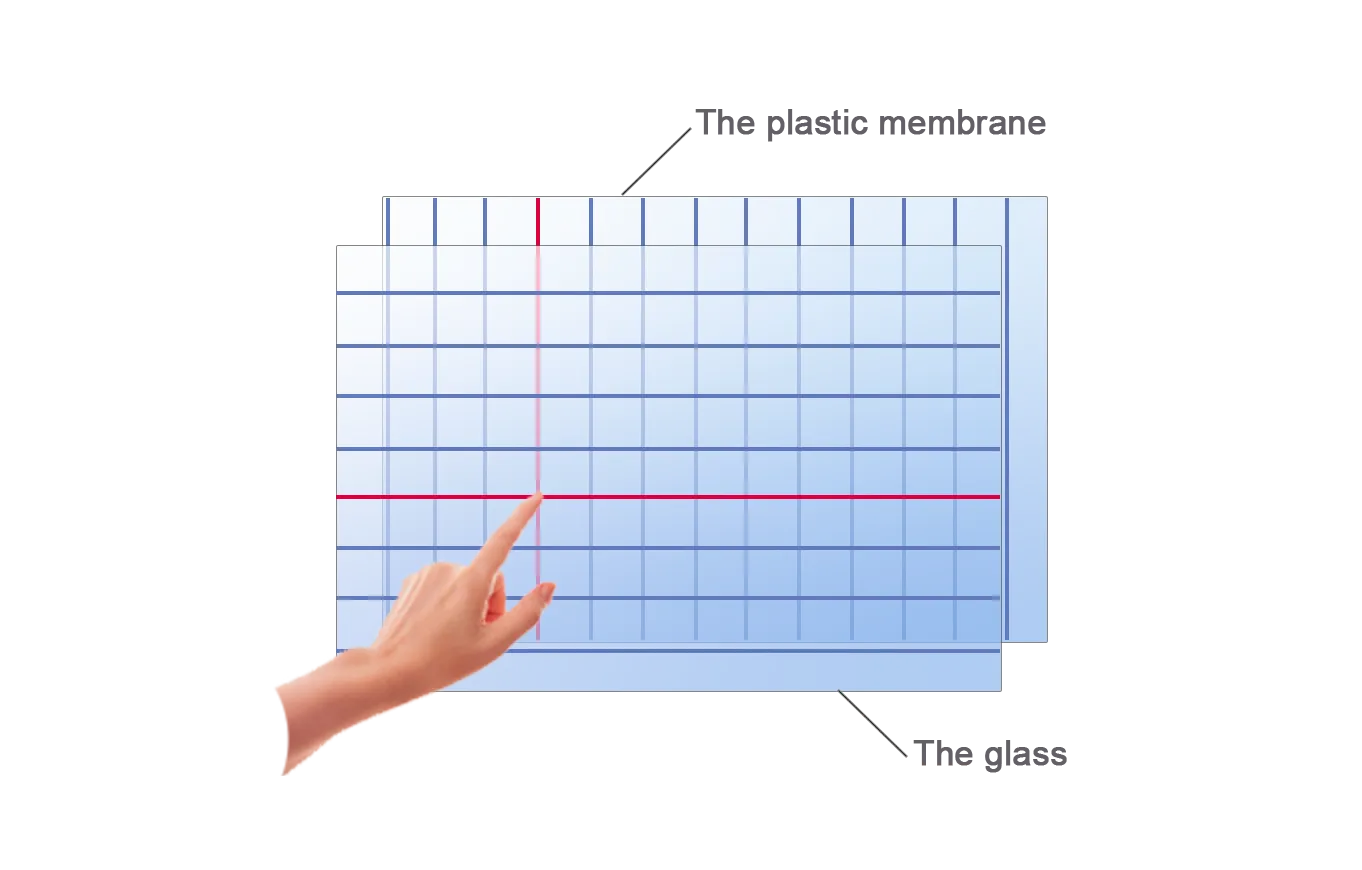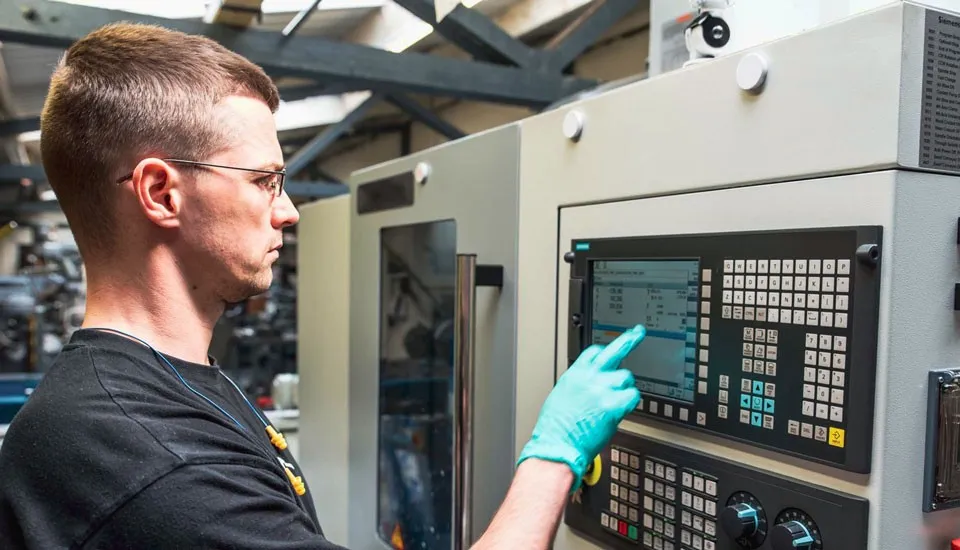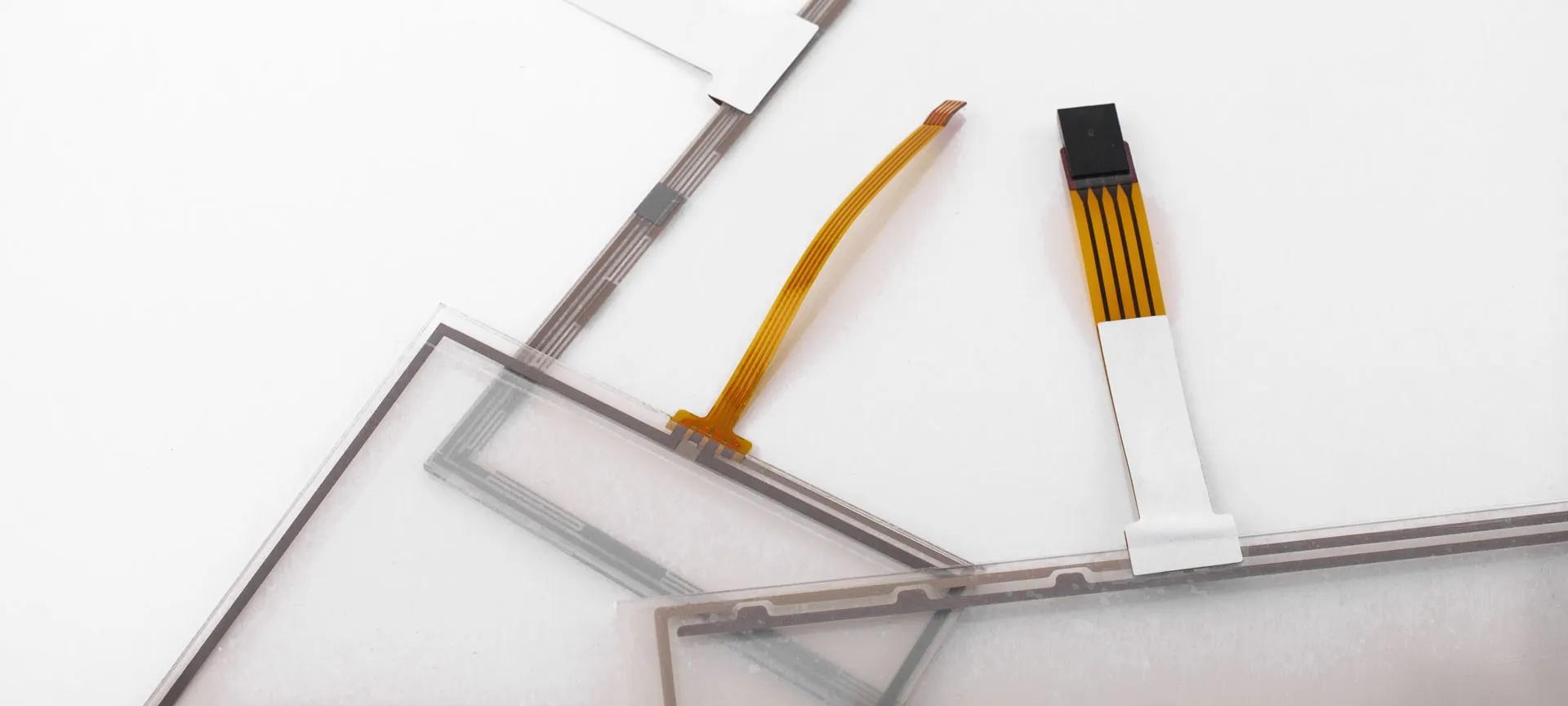
Resistive technology is designed to work with the interface developed for touch input. Such interface usually has all symbols, icons and buttons are enlarged for comfortable finger touch navigation. Resistive touchscreens, however, are capable to run on Windows, Android and other common interfaces. For such use a thin stylus is required.
A perfect choice for POS systems, educational institutions, medical sphere and other spheres that require sensor to respond to various objects: gloves, plastic cards, pointers, pencils, etc.
- Responds to a finger touch, gloved hand, and any non-sharp objects
- Supports single-touch interface
- Perfect for precise input, step-by-step use, and operation with any non-sharp objects
- Resistive equipment resistant to interference

Resistive screens are the best solution for "dirty manufacturing" and aggressive industrial conditions. Minor contamination does not affect normal functioning. Resistive touchscreens can be operated with dirty hands or without removing protective gloves.
The screen doesn't need to be cleaned every time minor contamination occurs. Not recommended for public use and in places with high throughput.
SUNLIGHT READABLE; WATER-/DIRT-/DUST- RESISTANT

- Resistant to electrical interference
- Water and humidity do not affect the working surface
Resistive touch technology is the least subject to electrical interference, electromagnetic and microwave radiation.
Water and condensation do not harm the working surface: as soon as water dries the screen will resume working correctly. In places with constant temperature change additional protection required against humidity on components of certain electronic parts (controller, connectors) of the equipment.


